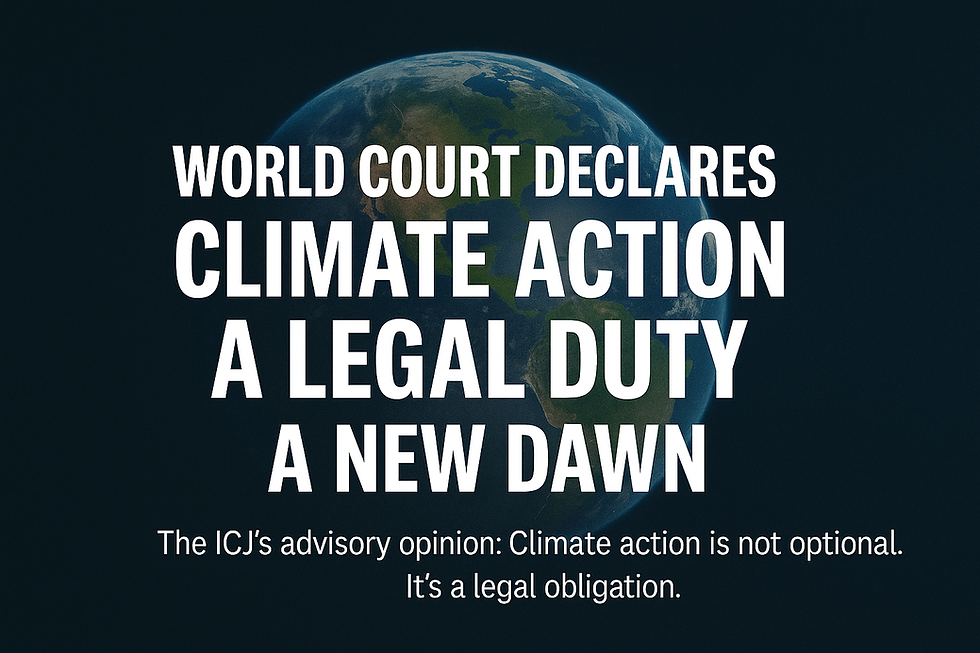What Gas is That? Get to Know Your Climate Pollutants
- Gregory Andrews

- Aug 21
- 3 min read
There’s a lot of confusion about greenhouse gases - what they are, where they come from, and how their impacts differ. CO₂-equivalent is a term that also gets thrown around n this space. It might be handy for accounting, but can blur our understanding of impacts and timescales for damage.
That's why I've written this guide. It's my plain-English attempt to help you understand each polluting culprit. And to understand the right fixes.
How to read the guide
Punch = how strongly a gas traps heat compared with CO₂.
Stay = how long the gas lingers (atmospheric lifetime).
Some greenhouse gasses are common giants, some are exotic heavyweights, and some quiet stayers. One isn’t even a gas at all! Let's break them down.
The Common Giant - CO₂
Punch: low (1 by definition)
Stay: long - it can persist for centuries to millennia.
Source: burning fossil fuels; making cement; deforestation and land-clearing.
Why care? CO₂ is cumulative. Like water in a bathtub, the level keeps rising while the tap's on. Every tonne avoided is warming we don't create.
The fix: electrify everything, stop new coal and gas, improve energy efficiency, protect and restore Country.
The Sprinter - Methane (CH₄)
Punch: high (30 to 80 times as powerful as CO₂)
Stay: short - about 12 years.
Source: leaks and venting from gas and coal; burping and farting from cattle and sheep; leaks from landfill and wastewater, prawn farms and piggeries.
Why care? Methane hits hard and fades fast. Cutting it now can cool the near term while we decarbonise CO₂ over the longer term.
The fix: plugging leaks; stopping gas venting and flaring; capturing landfill gas; composting; promoting lower-methane diets for humans and farm animals.
The Quiet Stayer - Nitrous Oxide (N₂O)
Punch: very high (over 300 times as powerful as CO₂)
Stay: long - about 120 years.
Source: nitrogen fertilisers and soils; manure; industry.
Why care? It’s the sleeper. Smaller volumes than CO₂ or CH₄, but bigger punch and longer stay.
The fix : precision nitrogen use (right rate, time, place); growing legumes and cover crops; improving manure management.
Exotic Heavyweights - F-gases (HFCs, SF₆, NF₃, PFCs)
Punch: extreme (hundreds to tens of thousands of times CO₂)
Stay: from decades to millennia.
Source: refrigeration, air con and heat pumps; high-voltage switchgear; semiconductors; some aerosols.
Why care? Tiny volumes result in outsized warming. Leakage really matters.
The fix: continue the Kigali phase-down; accelerate the shift to natural refrigerants (CO₂, ammonia, hydrocarbons); enforce strict leak detection, end-of-life capture and recycling.
Non-Gas Players - Water Vapour, Aerosols and Contrails
Water vapour: Warmer air holds more moisture, which amplifies warming and extreme weather. If CO₂ and methane go down, water vapour follows.
Aerosol pollution: Many polluting aerosols have been cooling the planet by reflecting sunlight. Cleaning the air (rightly) removes this masking effect, which is one reason we need to cut methane and the exotic heavyweights quickly while we decarbonise CO₂.
Contrails: Jet-made ice clouds formed in cold, humid air and covering the sky in thin lines. They almost double the direct CO₂ impacts of flying.
In the end, this isn’t a chemistry lesson. Knowing what gas is what can help turn the fog of terms and numbers into practical choices. We need to cut the fast heaters like methane, F-gases and contrails. We must phase out fossil CO₂ for good. And we need to steadily shrink nitrous oxide with smarter farming. Our decisions should reflect the different tempos of each pollutant. If we tackle each culprit according to its nature, we can buy relief now and safety for our future.





Good explanation, thanks Greg. Something that many people don't realise is that carbon monoxide (CO), when released from car exhausts and by smoking (anything), directly impacts on health on a daily basis. CO has a stronger affinity than oxygen (O) in binding to central iron-ions within the four heme groups in each red blood cell. CO causes oxygen depletion from the haemoglobin in red blood cells. This state of hypoxia lowers the transport of energy in the body, causes headaches, fatigue and more serious issues. It can make a noticeable difference for anyone caught in traffic.
So easy to understand your explanation. I have it pinned up on the board in the study so my grandkids can see it as they do their homework, and forwarded to friends for their kids.
Great to have it at my fingertips when people say it's not so bad as it really is.